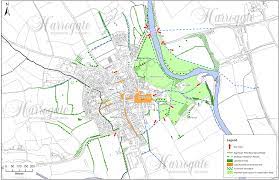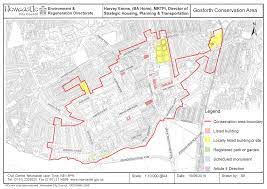Guest author, Ailsa Bailey - a Masters student at the University of York - dives into the history of conservation areas.

What are conservation areas?
Section 69 of the Planning (Listed Buildings and Conservation Areas) Act (1990) defines conservation areas as locations of special architectural or historic interest whose appearance and character should be preserved and enhanced. Estimates by Historic England predict that around 10,000 of these exist in England which constitutes 2.2% of the country. However, there are no specific legal criteria for establishing what defines a conservation area. This is due to the variety of site categories which attract historic and architectural interest. Although well known examples include historic town/city centres, all types of locations can become conservation areas including industrial sites and transport links like canals. This means that it is not just historic buildings which attract designation as a conservation area, but a combination of features within the local landscape and built environment. Ultimately, whilst listed building protection is used in England to preserve a specific structure, conservation areas instead offer protection to a broader area. This includes a focus on preserving the character of the region including considerations of how the built environment relates to the wider landscape. However, listed buildings still exist within conservation areas and therefore must follow the restrictions of both protection orders.
How are conservation areas introduced?
It is the responsibility of local planning authorities to designate conservation areas within their area of authority. As part of this process, local authorities must also periodically review all existing conservation areas and decide whether any further areas should be designated. It is their legal duty to publish and update proposals on how these areas will be preserved and enhanced. However, they are also required to consider the views of the public in their decisions including holding public meetings prior to decision making. Additionally, the Secretary of State has the power to designate conservation areas although this is considered a rare occurrence. Historic England may also establish conservation areas in London after consulting with the Secretary of State.
What restrictions apply?
Restrictions within conservation areas are a form of local land charge. In this case, ‘charge’ refers to restrictions placed upon land use within the designated area. Therefore, conservation areas restrict normal permitted development rights as found within the General Permitted Development Order (2015). These rights generally preclude the need for planning permission to developments which are considered to be too small to cause significant harm. Contrastingly, conservation areas produce a common requirement to apply for planning permission when certain external alterations are made to a building or space. Whilst a reduced number of permitted development rights still exist within conservation areas, these can be altered or revoked by further restrictions added through Article 4 Directions. Overall, the main protections introduced by conservation areas include:
Demolishing certain buildings or their associated gates/enclosures
Certain external alterations affecting either the landscape and/or built structures
Alterations affecting trees within the conservation area
What is an Article 4 Direction?
Article 4 Directions are restrictions set by local planning authorities which apply more specific protections to buildings and spaces within conservation areas. However, they can even remove permitted development rights for buildings situated just outside of conservation areas due to their historic and/or architectural importance. These protections especially apply to elevations in highly visible locations such as those adjoining a main pathway or road. Every local authority is entitled to enforce their own restrictions to preserve specific features of importance within their local area.
Ultimately, this is an effective legal tool which mitigates the issues within national restrictions which are too general to automatically protect the historic environment. Indeed, differences exist in what kinds of heritage various communities possess and thereafter value as important. Article 4 Directions also offer further control over non-designated heritage assets which are not offered the same protection as listed buildings. Despite the advantages of these restrictions, not every conservation area has them. Government advice in paragraphs 53-54 of the National Planning Policy Framework also encourages local authorities to apply Article 4 Directions only when absolutely necessary and thereafter to the smallest area possible.
How can I find out more about my local conservation area?
Some local planning authorities publish Conservation Area Appraisals which can often be found on their associated websites. These provide the public with further information regarding what features in the area are considered important, the history of the space alongside any proposals for restricted development to maintain the character of the area. Specific advice can also be obtained through contacting the relevant local planning authority. Furthermore, individual research can be conducted through use of the local Historic Environment Record (HER) which each council is legally required to maintain and make accessible to the public.
These databases often prove particularly useful when identifying features of historic/archaeological interest alongside their place in the wider landscape. Some local councils have also set up public conservation area advisory committees which serve to both represent residents’ interests and promote knowledge of the area’s significance. And finally, getting in touch with heritage professionals is certain to provide further insights and specialist advice regarding conservation areas and their impact on local development projects.
At Blue Willow Heritage, we provide expert advice and management strategies to support sustainable development within conservation areas, without compromising their setting and significance. If you need help managing your heritage assets, Blue Willow Heritage can help. If you would like to discuss your project or simply need some impartial, no-obligation advice, then please do not hesitate to get in touch.





Comments